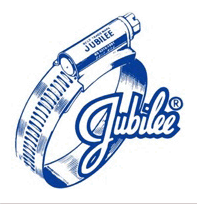Lease Accounting: Tenant Improvement Allowance
페이지 정보
작성자 Lavonne, 이메일 lavonne.callaghan@yahoo.de 작성일25-11-29 03:14 조회0회 댓글0건신청자 정보
직책 , 주소 , 우편번호관심 정보
제품, 관심품목관심 정보
년간사용수량 , 카달록 필요관련링크
본문

Tenant improvement allowance is a win-win for a business realty space. Landlords are always delighted to have their residential or commercial properties improved, and occupants are always looking for a much better handle shared build-out costs. This leads to scenarios in which a renter makes restorations, repair work, or other enhancements to a leased space in exchange for a break on lease payments or other compensation. It's a really typical agreement in between a lessor (the landlord) and the lessee (the renter). But for lease accountants, it's not constantly clear how these deals ought to be taped and accounted for.

A property manager that pays cash to a renter as reimbursement for leasehold enhancements has actually provided the lessee with an occupant enhancement allowance (TIA) for said future improvements. TIAs are a type of lease incentives. The new lease accounting requirements ASC 842 and IFRS 16 bring lots of modifications to accounting practices for tenant improvement allowances and lease rewards.
Tenant Improvement & Lease Negotiation
Tenant improvement allowance does not need to be paid back, so it is utilized to negotiate during the lease-signing process. Other variable factors that affect a tenant's lease arrangement are base rent, complimentary lease, and longer-term lease offers. Residential or commercial property owners use TI allowance to incentivize quality occupants during the settlement process with a total space that fits their distinct business requirements. If your business realty team carries out a lease with TI allowance, then it has upstream effects to your lease accounting processes.
To assist you comprehend the principles and the modifications involved with the new lease accounting standards, here's a guide to whatever you need to know about occupant enhancement allowance accounting.
A Bit About Lease Incentives
Before digging into the details of TIAs, you must first consider what makes up a lease reward. The common practice of exchanging leased residential or commercial property enhancements for some financial consideration certainly certifies as a lease reward.
But that's just one potential incentive, and it assists to understand the larger image of lease incentives. It likewise helps you understand why ASC 842 has the assistance it does for lease incentives and TIAs-and how that assistance has changed because ASC 840.
ASC 842 specifies a lease incentive as one of 2 things:
- Reimbursement or payments made to or on behalf of a lessee.
- Losses sustained by a lessor as a result of assuming a lessee's pre-existing lease agreement with a 3rd party.
IFRS 16 defines a lease incentive as payments or compensation made by a lessor to a lessee connected with a lease. Besides the differing meanings, ASC 842 and IFRS 16 treat lease incentives and TIAs essentially the exact same. To keep things basic, the rest of this post describes ASC 842 only, however the very same principles apply to IFRS 16.
The new lease accounting requirements require all leases to be taped on an organization's balance sheet as lease liabilities and right of use (ROU) properties. The primary factor lease rewards in general-and occupant enhancement allowances specifically-are so essential to the new requirement is due to the fact that the formula for computing an ROU asset includes lease incentives.
That formula is:
ROU possession =
Initial lease liability
PLUS Prepaid lease payments
PLUS Initial direct expenses
MINUS Any lease incentives received
With that in mind, it's simple to see why you require to accurately account for lease rewards, consisting of TIAs. As a vital part of the ROU property, lease incentives have an effect on all journal entries associated with a lease. And since the ROU property didn't exist in ASC 840 and other earlier standards, this represents a considerable change in practice for lease accountants.
Should renter enhancement allowance be capitalized?
Tenant enhancements are long-term properties that include worth to commercial residential or commercial properties. If they extend the useful life of a residential or commercial property and/or boost the residential or commercial property's worth, occupant enhancements need to be capitalized.
How ASC 840 Accounted for Tenant Improvement Allowances
Under ASC 840, when a lessee received a TIA, they followed the guidance for lease incentives. Under the old requirement, the guidance was just to acknowledge the TIA as a decrease to rent expenditure on a straight-line basis over the regard to the lease.
This made journal entries a relatively easy job: record the payment as a debit to cash, with an offsetting credit to a lease incentive liability. This liability would be amortized as a decrease to rent expenses over the term of the lease. In cases where a TIA was gotten instantly, the lessee would debit accounts receivable.
While ASC 842 still categorizes TIAs as lease rewards, this is where similarities in the accounting process end.
How ASC 842 Accounts for Tenant Improvement Allowances
The major modification in ASC 842 concerning TIAs is that they are no longer reported as lease reward liability and amortized over the life of the lease. Lease rewards are frequently taped in the preliminary measurement of the ROU asset and the matching lease liability.
Naturally, that assumes that any tenant enhancement allowances are known upfront and kept in mind in the lease agreement. To be sure, this is a common practice. It's not unusual to see TIAs stated in lease contracts, either as a lump amount or set as a rate per square foot. But ASC 842 consists of assistance to account for the timing of lease incentives, consisting of TIAs.
The language used is "paid" rewards (paid to the lessee prior to or at start of the lease) and "payable" incentives (payable at some time after commencement). Paid and payable lease rewards are accounted for in different ways under ASC 842. Here's a take a look at how both paid and payable TIAs are handled and how they both affect the ROU asset and lease liabilities.
TIAs Paid At or Before Lease Commencement
For TIAs paid to the lessee prior to or at the time of lease commencement, ASC 842 assistance says these lease incentives are accounted for as a direct adjustment to the opening balance of the ROU possession.
The ROU property is always at first equal to the lease liability, which itself is calculated as the present value of future payments. That figure is then changed by the other consider the ROU asset formula, including reductions to rent liability in the form of a lease incentive, such as a TIA, which means the impact of a paid lease reward or TIA is that it decreases the ROU asset.
For entities making the shift to ASC 842, any unamortized balance of a TIA is debited so that it eliminates the lease reward liability from the balance sheet. It is then reclassified to the ROU possession's opening balance by way of a credit.
After an ASC 842 transition is total, TIAs got at the time of lease beginning are recognized as a debit to cash and an adjustment to the initial value of the ROU property. This is accomplished with a credit to the lease liability account and a debit to the ROU possession, equivalent to the preliminary liability balance minus the quantity of the TIA.
TIAs Payable After Lease Commencement
In many cases, a tenant improvement allowance is gotten as a reduction of lease payments in the periods when the improvements to the rented residential or commercial property take place. The ASC 842 assistance for lease rewards, including TIAs, paid after the lease beginning date is factored into the lease liability in addition to the ROU possession measurement.
Recall that the lease liability under the new standards is determined as the present value of future payments. That consists of payments got for a renter improvement allowance. The timing of cash circulations is an important consider present worth computations, which's shown in how TIA payments are taped.
Payments for improvements need to be taped in the period when they are anticipated to be gotten during the lease term and then netted with the rent payments for that very same duration. The lease liability is decreased because of the anticipated money payments, and this likewise has the effect of lowering the ROU possession balance.
TIAs That Are Neither Paid Nor Payable
Beyond paid and payable lease rewards, a 3rd type of lease reward is those that fit neither category.
Lease incentives that are neither paid nor payable are contingent on, or just receivable after, some occurs. While ASC 842 acknowledges that this is a kind of lease reward that could exist, it does not offer any particular assistance on how to properly represent rewards that fall into this classification. Therefore, various techniques have actually been utilized to account for TIAs of this type.
One typical technique is to identify if lease terms consist of an optimum amount of repayment and examine whether the lessee is likely to sustain those expenses. If so, that optimum amount of reimbursement can be dealt with as a payable lease incentive, with the corresponding decrease to the ROU possession and lease liability.
A 2nd approach is to wait until all reimbursable costs have actually been incurred and then minimize the ROU possession and lease liability by that quantity.
As business and their lease accounting professionals spend more time under ASC 842 and more audit cycles have actually happened, more conclusive guidance on this 3rd kind of lease incentive will likely emerge. It's also possible that FASB may customize ASC 842's standards to cover this third kind of lease reward at some point in the future.
Leasehold Improvements: Lessor Asset or Lessee Asset?
One of the more critical elements of an effective ASC 842 transition is effectively determining and categorizing leases. The brand-new standard requires all leases to be taped on the balance sheet and under one of 2 classifications - operating leases or finance leases (formerly understood as capital leases under ASC 840). ASC 842 also requires that ingrained leases be identified in other agreements that might not be outwardly identified as a lease arrangement.
When it comes to occupant enhancement allowances and lease incentives more normally, it's likewise critical to identify if a leasehold improvement certifies as a lessor property or a lessee asset.
The term "leasehold improvement" is a sort of catch-all term used to explain a tenant carrying out enhancements on a leased area and receiving some sort of payment in return. However, it's not always clear if the reduced lease payments or other compensation is a type of lease incentive and a possession for the lessee.
ASC 842 deal high-level assistance regarding this. According to the requirement, if a lessee is making enhancements to a rented space with their own branding and will then own the enhancements, it certifies as a lessee asset. However, if the enhancements are actually a lessor possession, any repayment or compensation for the improvement would need to be represented in a different way.
Some of the elements to consider in the lessor possession vs. lessee possession determination focus on requirements set out in the lease contract. When a lease requires a lessee to make specified enhancements, it will be a lessor property. On the other hand, if the improvements are not required, specify to the lessee, and can't be utilized by subsequent occupants, they are a lessee possession.
Lessor Asset Accounting Under ASC 842

If a leasehold improvement is figured out to be a lessor asset, the lessee must not represent it as a lease incentive.
For instance, if a lessor contractually requires a lessee to incur the costs of fixing the rented area's front door and entrance before lease commencement, this is not a lease reward. The lessee would account for the repair work expenditures as pre-paid rent. Any reimbursements, consisting of reductions in regular monthly lease payments, would be represented as a decrease to that pre-paid rent.
Unreimbursed portions of the enhancement expense are then consisted of in lease payments upon commencement of the lease.
If a leasehold enhancement is figured out to be a lessee possession, then it qualifies as a renter enhancement allowance under ASC 842. All of the assistance on accounting for lease incentives applies, with suitable measurement of the ROU asset and lease liabilities.
Occupier Makes Tenant Improvement Allowance Accounting Easier
The modifications made to occupant improvement allowance accounting from ASC 840 to ASC 842 are anything however uncomplicated. Whereas lease rewards were a basic matter of credits and debits under the old requirement, lease accounting professionals should now be familiar with the ROU possession, the present value of future payments, and lease liabilities in order to update your balance sheet and income statement.
All of these changes include transparency to leasing plans and expenses, ultimately giving your business's monetary statements more precision. Mastering all the requirements of ASC 842 is significantly much easier with a modern lease accounting software application. Here at Occupier, we provide the most extensive option, built on an intuitive and innovative tech stack.

댓글목록
등록된 댓글이 없습니다.











